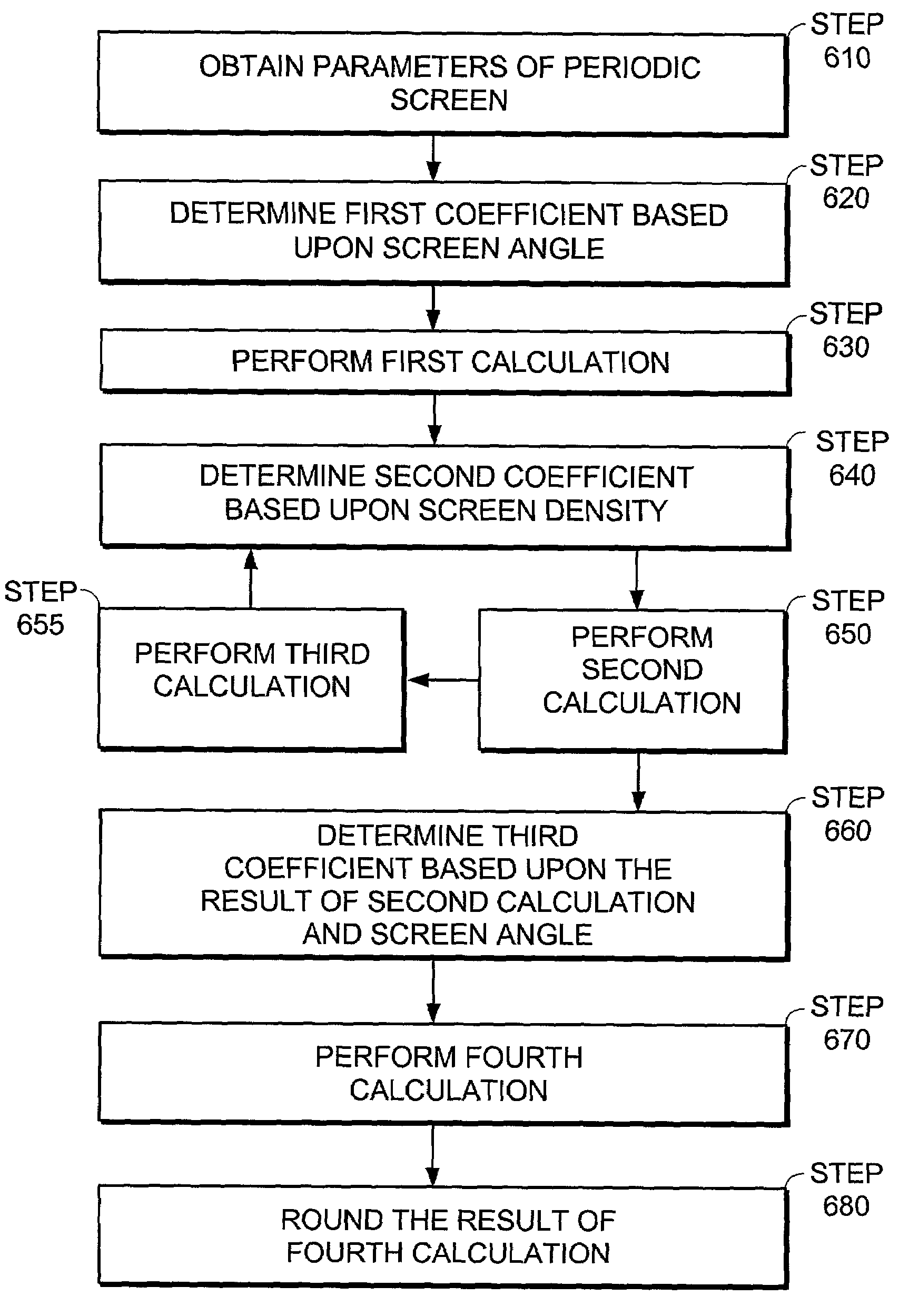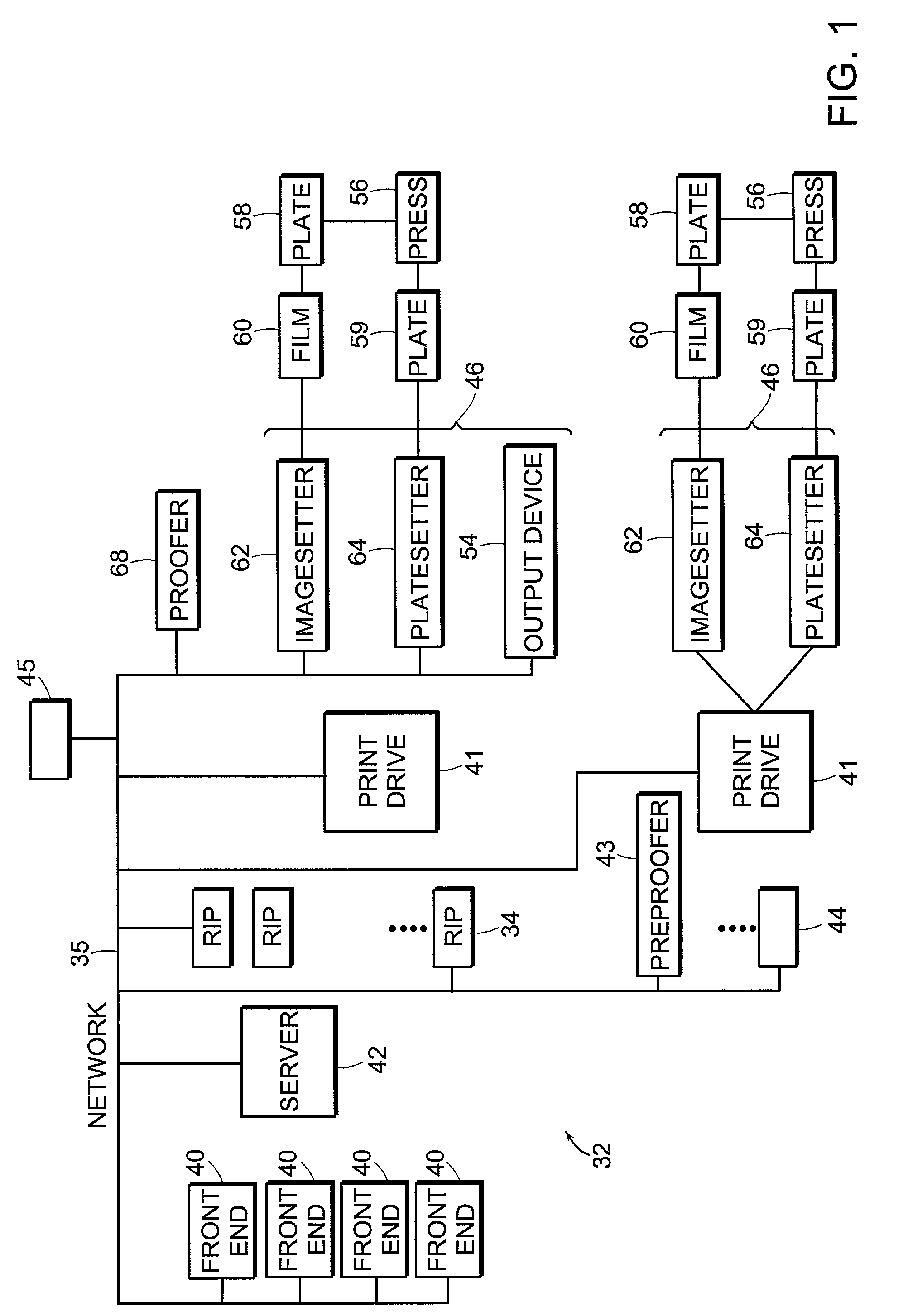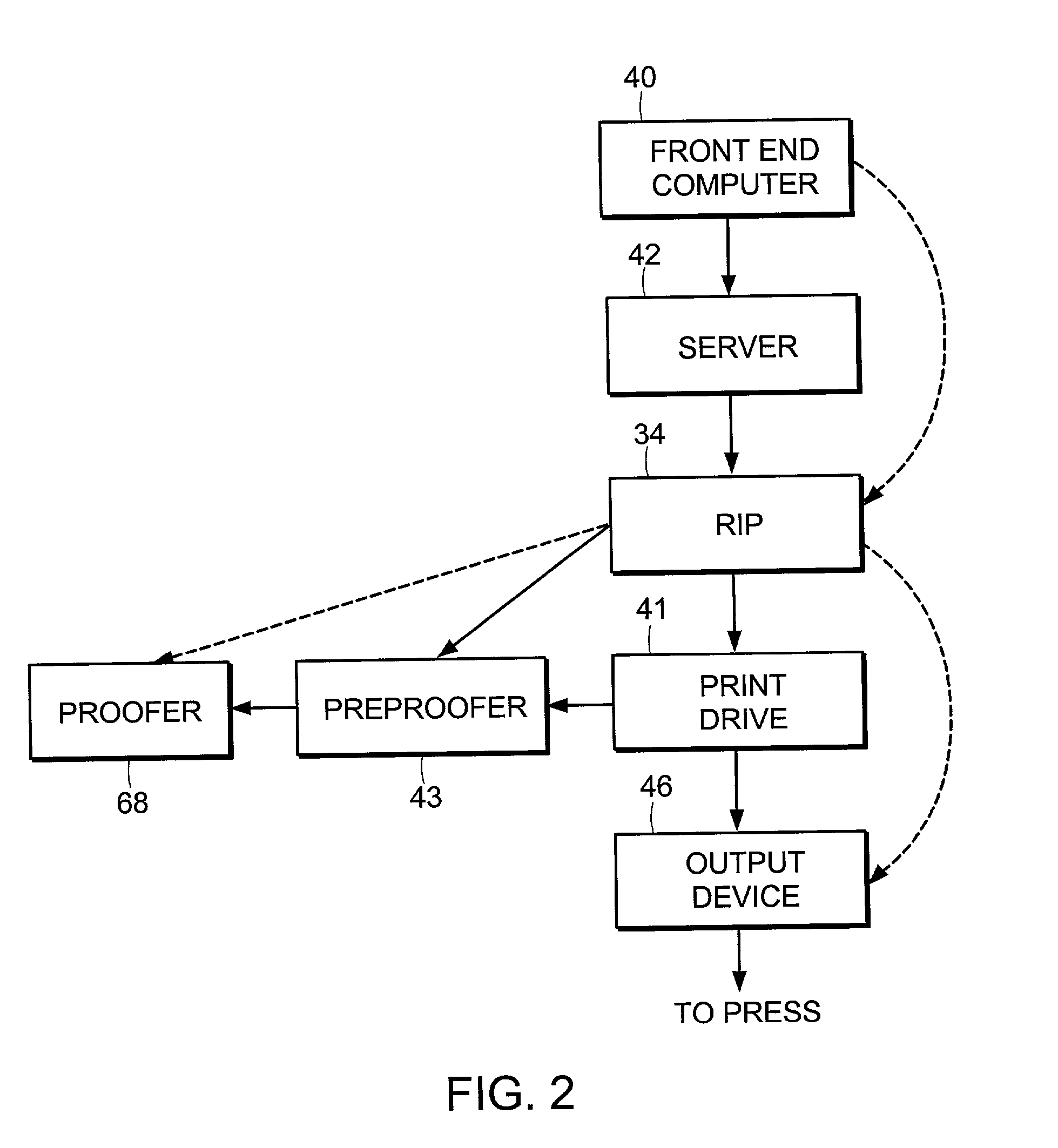[0020]Thus, it is an object of the present invention to provide an efficient method for sampling
high resolution image data to create lower resolution color proofs having optimal contrast between gray levels and improved sharpness while substantially lacking interference patterns. It is another object of the present invention to provide a method for descreening and scaling
high resolution image data in a single computational step thereby generating color proofs in real-time. It is yet another object of the present invention to provide a method, which would allow to generate a single set of image data to create on-the-fly either a
medium resolution color proof or a high resolution printed image without having to process the data by the
raster image processor twice, once for the proof, and once for the printed image.
[0021]In general, embodiments of the invention improve on those of U.S. Pat. No. 6,252,676 B1 to Azima et al., which is incorporated herein by reference, for example, with changes to the way that the
high resolution image data is descreened. The improved descreening method is then used to generate a medium resolution proof. The method of the invention retains the benefits of Azima '676 with additional improvements in descreening of high resolution image data and associated improvement in efficiency of generating the proof and accuracy thereof.
[0022]Embodiments of the invention focus on the descreening portion of color proof preparation, and provide inexpensive solutions to the disadvantages of current descreening methods. More particularly, embodiments of the invention enable a one-pass conversion to descreen and scale 1 bit / sample high resolution image data to 8 bit / sample medium resolution image data.
High resolution image data may be generated using screening technologies that result in images having a resolution between 1200 and 4000 pixels / inch. Examples of such technologies include Agfa Balanced Screenings and Agfa CristalRaster® available from Agfa Corporation of Wilmington,
Mass. Typical proof
image resolution is between 300–720 pixels / inch. Scaling is based upon the ratio of the source resolution to that of the target proof resolution. Descreening sampling is based upon a sample dimension derived beforehand with knowledge of the screen applied to create the high resolution image.
[0032]In general, in yet another aspect, the invention is directed towards a method for generating a descreened contone proof image that accurately reflects the
layout of a
halftone image converted from an original contone image using a low-density periodic screen. The method includes the steps of
processing the original contone image to create a plurality of
raster data sets representing sets of objects of the halftone image and receiving at a print drive from at least one
raster image processor the first
raster data of a first set of objects of the halftone image processed by the at least one
raster image processor. The method further includes receiving the second
raster data of a second set of objects of the halftone image processed by the at least one raster
image processor. The first set of objects may represent at least one variable-color object of the original contone image. The second set of objects may represent at least one
solid-color object of the original contone image. The method also includes facilitating selection of the first raster data and the second raster data via the
user interface. The method further comprises determining an optimal screen-based sample dimension suitable for descreening and rescaling of the first raster data and determining an optimal resolution-based sample dimension suitable for descreening and resealing of the second raster data.
[0035]In yet another aspect, the invention generally features a prepress
system for generating a descreened contone proof image that accurately reflects the
layout of a halftone image converted from an original contone image using a periodic screen. The prepress
system of the invention includes a front end having an imaging application for creating a contone image having one or more separations and for forming a description of the contone image in a
page description language. The prepress
system also includes at least one raster
image processor for processing the description of the contone image in the
page description language thereby converting the contone image into the halftone image by creating raster data sets for each color separation associated with the halftone image. The prepress system further includes a print drive for controlling operations therein. The print drive comprises a print drive input terminal receiving, from the at least one raster
image processor, the raster data for each color separation associated with the halftone image; a job
control system for receiving, storing, digitally combining, and initiating output of raster data, a
user interface for directing operation of the job
control system by a system operator; a preproofer for determining an optimal sample dimension for at least one of the raster data sets and for descreening, rescaling, resizing, and combining the at least one of the raster data sets using the optimal sample dimension to create a proofer raster
data set; and a proofer for imaging the proofer raster
data set. The preproofer may be capable of wrapping the proof raster
data set in a
page description language wrapper; and transmitting the proof raster data set wrapped in the page description language wrapper to the proofer.
 Login to View More
Login to View More  Login to View More
Login to View More 


